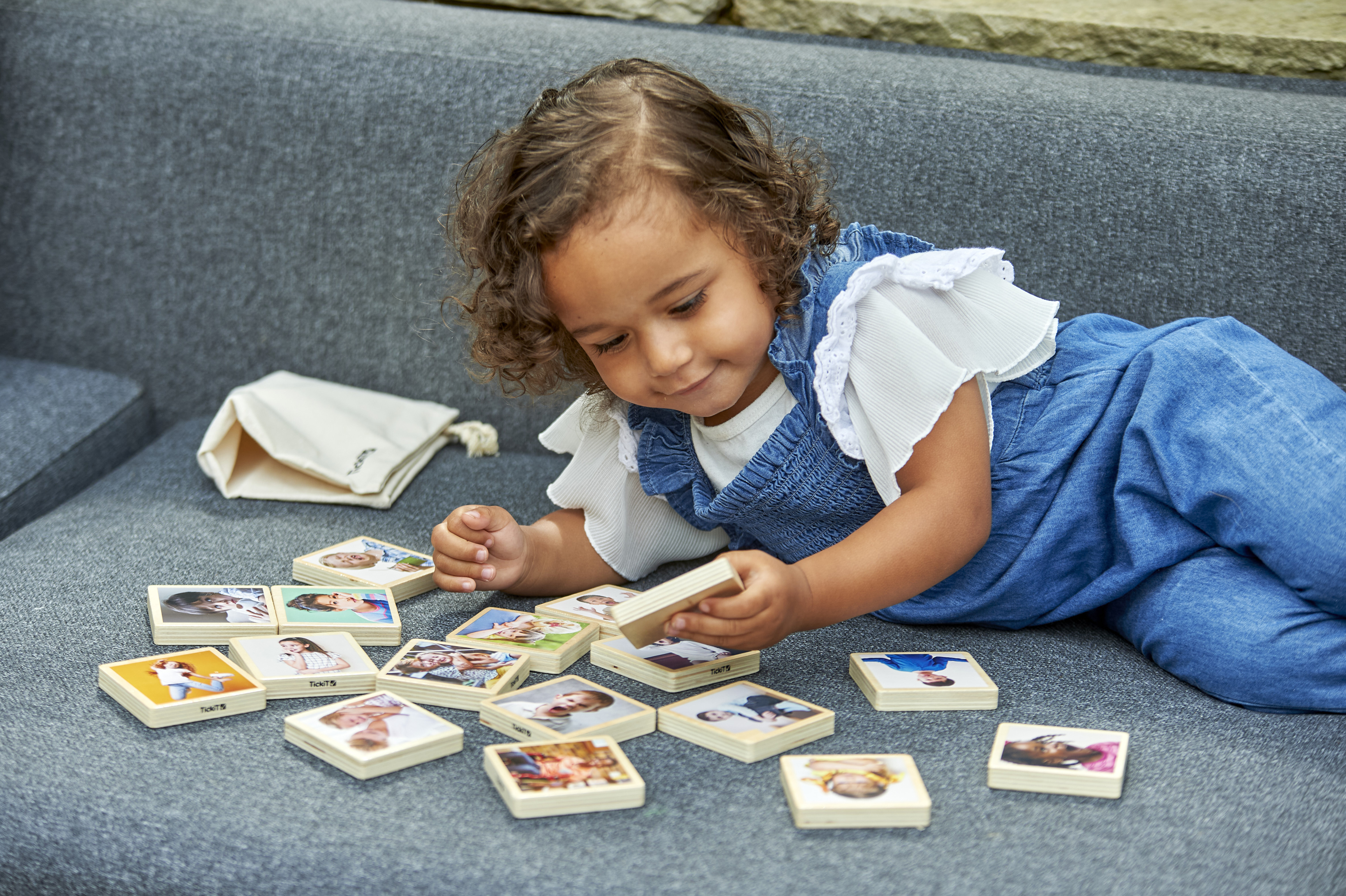Children’s emotions can turn in an instant. One minute they can be happily hunting for hidden treasure in the sandpit. Then the next, they might be stomping their feet in frustration as their friends appear to have uncovered more jewels than them. Helping children to understand and recognise their feelings is an important step towards being able to regulate their own behaviour. Practitioners can support this by giving children the language and resources to explore and consider their emotions.
 An enabling environment provides a host of opportunities to discuss emotions and feelings. Since the pandemic, supporting children’s physical, emotional and social development (PSED) has been a key focus for many early years settings, as many more children show signs of dysregulation, which often reveals itself in behavioural issues or difficulties with attachment. While there is no doubt that secure relationships are at the heart of children’s PSED, well-chosen resources that are open-ended can provide a stimulus to help children open up about their feelings.
An enabling environment provides a host of opportunities to discuss emotions and feelings. Since the pandemic, supporting children’s physical, emotional and social development (PSED) has been a key focus for many early years settings, as many more children show signs of dysregulation, which often reveals itself in behavioural issues or difficulties with attachment. While there is no doubt that secure relationships are at the heart of children’s PSED, well-chosen resources that are open-ended can provide a stimulus to help children open up about their feelings.
SENSE OF EASE
Ensure there are calm spaces where children can go in order to take time out if they are overwhelmed. Reading a story or engaging in an activity in a peaceful, cosy atmosphere with a supportive practitioner can lead to children feeling more safe to discuss emotions or anxieties.
Stories that are rich in emotive language – positive and negative - are great prompts for discussions. While reading the story, point to characters in the pictures and ask the children questions like ‘Why do you think she looks sad?’ and ‘What do you think is making him feel frightened?’
Support children to articulate their feelings and reassure them it is ok to have strong emotions and to feel cross, but it is not ok, for example, to hit someone.
NAMING EMOTIONS
Emotion picture cards are useful for certain scenarios, such as the start of each day when children can place a card next to their photo on the registration board. However they can be limited in the number of emotions they depict – often happy, sad and angry are the most common and easily-recognised ones. Real photographs of children showing different emotions and reactions are not only more relatable to other children, but can also help develop their emotional intelligence, which will enable them to form strong relationships with their peers.
Rachel Comfort, a special educational needs (SEN) practitioner working with children in early years and key stage 1, has been using TickIt’s My Emotion Wooden Tiles with a mirror to help children identify their feelings. After using the resources with a small group of pre-school children, she said,
‘Children were fascinated by their own reflections. They looked at themselves in the mirror and pulled many different faces. There’s often a lack of vocabulary linked to emotions, with most children only referring to sad, happy, or scared. But the use of a mirror and the wooden tiles allowed for conversations about emotions and the introduction of new vocabulary. Before long, a few children began to share their memories of when they had felt an emotion which they recognised on one of the tiles. Through the conversations that followed, the children grew their vocabulary by attributing their experiences and feelings to that on the tile. The use of images of real children was hugely beneficial in this example because they were so relatable for the children.
‘The children also initiated using the tiles to play a few games. These included matching two or more emotion tiles with each other. This gave me, as the supporting adult, a fantastic opportunity to model and introduce new vocabulary. The children also began acting out an emotion for the other children to guess which tile matched the actor’s emotion.’
 IMAGINARY PLAY
IMAGINARY PLAY
Role play and small-world play are great tools for enabling children to open up or play through their thoughts and feelings, especially children with English as an additional language or those with SEN who may need more visual cues.
A home corner is the ideal space for children to act out social-domestic play scenarios or play out familiar scenes from home. Practitioners can sensitively intervene where appropriate, introducing a doll to the play and using phrases like ‘Oh the baby's crying, I wonder what's the matter?’ to evoke talk around emotions.
Similarly, practitioners can look to source sustainably produced resources that can challenge children to think differently and can be used in a range of ways so children can have control over their play. Wooden blocks, curtain rings, pebbles and natural resources like pine cones, sticks or sand and water are all materials that can be used for an endless variety of purposes with no fixed agenda. Playing with these resources will not only empower children to make choices but also allow them feel like experts in their environment, which will do wonders for nurturing their self-esteem.
Here are some more popular TickIt resources for nurturing children’s PSED:
Understanding Feelings Set
Expression Mirror Faces
Sound Bank Plus Mirror
Sensory Reflective Colour Burst Buttons
First published on Early Years Educator 13/03/2023
